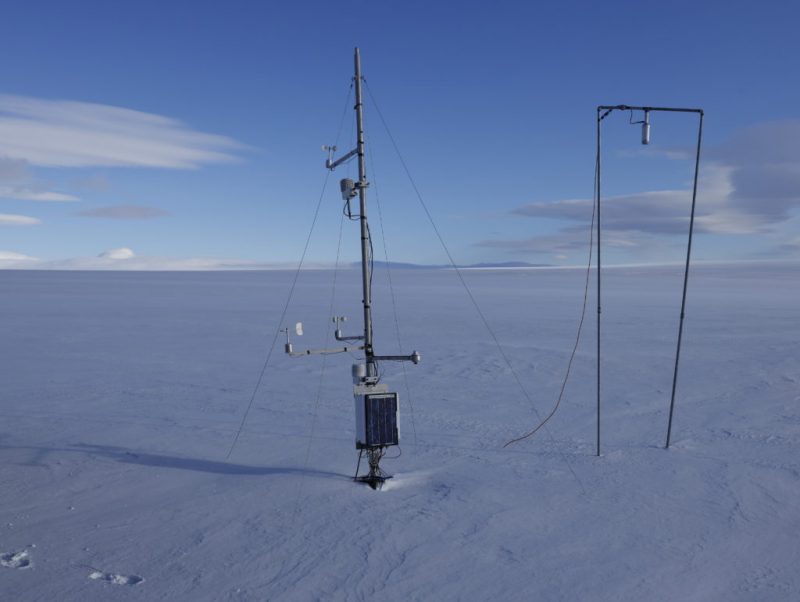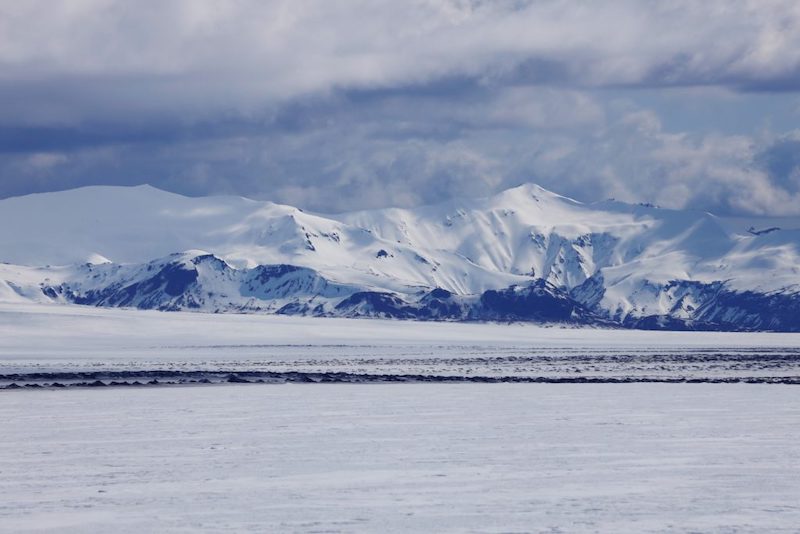
Blue Blob is a patch of cold seawater
The American Geophysical Union (AGU) reported this week (February 15, 2022) on a patch of cold water in the North Atlantic Ocean nicknamed the Blue Blob. These scientists said it has temporarily slowed the melting of Iceland’s glaciers, but that melting can be expected to accelerate around the year 2050.
Researchers used climate models and observations to conclude the Blue Blob has temporarily slowed ice-melt by chilling the air over the island since 2011.
The peer-reviewed journal Geophysical Research Letters published the new study on January 24.
Their announcement explained:
Nowhere on Earth has warmed as quickly as the Arctic. Recent studies report the area is warming four times faster than the global average. Iceland’s glaciers steadily shrank from 1995 to 2010, losing an average of 11 gigatons of ice per year. Starting in 2011, however, the speed of Iceland’s melting slowed, resulting in about half as much ice loss, or about 5 gigatons annually. This trend was not seen in nearby, larger glaciers across Greenland and Svalbard.
So these researchers wanted to know, what caused the slowdown in ice loss from Iceland’s glaciers? And they wanted to know why – at the same time – nearby glaciers, for example in Greenland, were continuing to melt at the same rate as before.
According to AGU, the researchers investigated the Blue Blob in part by estimating how much snow Iceland’s glaciers receive in winter. They verified their estimates using depth measurements from Iceland’s glaciers, collected by colleagues at the University of Iceland since the 1990s. Then they also calculated how much ice goes into the ocean from meltwater runoff from Iceland’s glaciers in summer.
Their investigation connected the Blue Blob with records of lower air temperatures across Iceland in summer, which coincide with the timing of the ice-loss slowdown.
Sea level rise from glacial melt
The authors of this study say that Iceland’s glaciers are poised to lose about 1/3 of their current volume by 2100. According to current estimates of global warming, and of ice loss from glaciers, Iceland’s glaciers could disappear entirely by 2300. If the country’s 820 cubic miles (3,400 cubic km) of ice were to melt, the sea level would rise by 0.35 inches (9 mm). Brice Noël, lead author and a climate modeler at Utrecht University, said:
In the end, the message is still clear. The Arctic is warming fast. If we wish to see glaciers in Iceland, then we have to curb the warming.
In the meantime, these scientists said they would continue to investigate the origin and cause of the cold patch of seawater that has slowed Iceland’s ice-melt: the Blue Blob.

Bottom line: New research published in Geophysical Research Letters suggests that a patch of cold water in the North Atlantic Ocean – nicknamed the Blue Blob – has temporarily slowed the melting of Iceland’s glaciers. Ice loss from Iceland’s glaciers is expected to accelerate again by 2050.
Source: North Atlantic Cooling is Slowing Down Mass Loss of Icelandic Glaciers
Read more from EarthSky: Scientists forecast sea level rise of up to a foot by 2050











